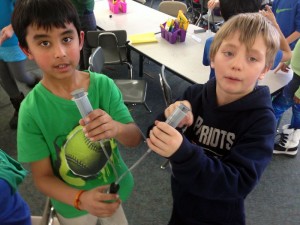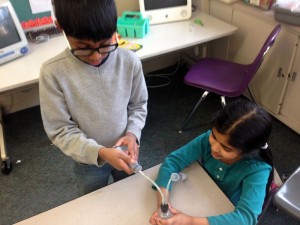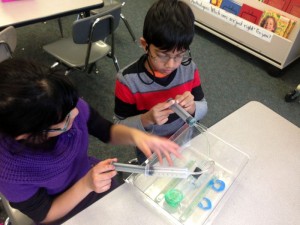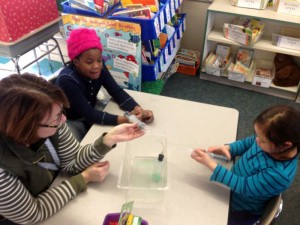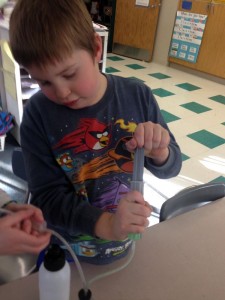Posted by kavery508 | Posted in Uncategorized | Posted on January 20, 2015
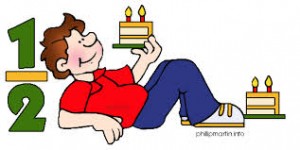 We’re halfway to the end of the year! This is a good time to reflect on our journey, and to thank you for your efforts as partners in your child’s education. It’s remarkable how much growth the kids have shown, from learning skills and critical thinking to their growth as caring members of our learning community. To foster self-reflection, try asking your child to compare how s/he is different now from the start of the year. What things can s/he do now that s/he couldn’t before? What things does s/he still want to learn (goals) and how can we get there? It’s also a good time to begin learning about division, fractions and the concept of 1/2: http://leaderinlearning.wordpress.com/2011/10/19/how-to-teach-halving/ Scroll down for good ideas with larger numbers too (like 180!).
We’re halfway to the end of the year! This is a good time to reflect on our journey, and to thank you for your efforts as partners in your child’s education. It’s remarkable how much growth the kids have shown, from learning skills and critical thinking to their growth as caring members of our learning community. To foster self-reflection, try asking your child to compare how s/he is different now from the start of the year. What things can s/he do now that s/he couldn’t before? What things does s/he still want to learn (goals) and how can we get there? It’s also a good time to begin learning about division, fractions and the concept of 1/2: http://leaderinlearning.wordpress.com/2011/10/19/how-to-teach-halving/ Scroll down for good ideas with larger numbers too (like 180!).
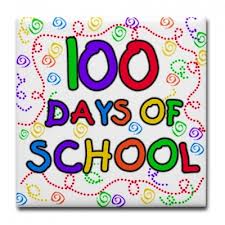 Of course, this means the 100th day of school is nearing (at this time, Feb. 4)! I will set up a “100 Day Museum” to show off student projects and learning. I encourage children to create a poster/collection/display/etc. that somehow represents 100. Instead of simply collecting 100 things in a bag, I’m challenging students to think more deeply about number. They could bring/show something that displays an understanding of number, patterns, and/or the math we’ve done so far, such as: grouping objects (stickers/pennies/etc.) on a poster that shows counting by 5s, 10s, 2s, etc., possibly with accompanying multiplication/repeated addition/division explanations; bar models using 100; create real-world problems with 100. There is also a plethora of projects and ideas on Pinterest and across the web!
Of course, this means the 100th day of school is nearing (at this time, Feb. 4)! I will set up a “100 Day Museum” to show off student projects and learning. I encourage children to create a poster/collection/display/etc. that somehow represents 100. Instead of simply collecting 100 things in a bag, I’m challenging students to think more deeply about number. They could bring/show something that displays an understanding of number, patterns, and/or the math we’ve done so far, such as: grouping objects (stickers/pennies/etc.) on a poster that shows counting by 5s, 10s, 2s, etc., possibly with accompanying multiplication/repeated addition/division explanations; bar models using 100; create real-world problems with 100. There is also a plethora of projects and ideas on Pinterest and across the web!
Our writing focus switches back to opinion writing. The eventual goal on the road to college and career readiness is for students to synthesize knowledge and present arguments that are supported with evidence! At this time, our kids are learning to write an introductory sentence on any topic; state an opinion; list reasons that support it; and write a concluding sentence. Integrating writing with social studies, we will write opinion pieces this week about civil rights leaders MLK, Rosa Parks, and/or Susan B. Anthony and explain our opinions regarding their leadership qualities. Here is a link to Ducksters, which has a FANTASTIC collection of biographies of famous figures in history that are written at a level of understanding for kids: http://www.ducksters.com/biography/
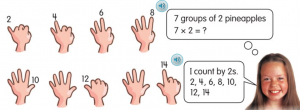 Chapter 6 of MIF focuses on multiplication facts of 2s, 5s, and 10s by teaching the connection between skip-counting and multiplication, and using that understanding to solve problems. To solve 2 x 8, for example, we want students to count by 2s eight times, so that along the way they begin to learn that 3 times counting 2 gives you six and 4 times counting 2 gives you 8, etc. It is a way of learning the meaning behind the numbers involved in multiplication instead of just memorizing facts (which has value, too, just not on its own). One way we teach this is to have students count pairs of objects. Another is to hop by 2s up the number grid. Next is counting on fingers while counting aloud by 2 (1 finger up gives you 2, or 1 x 2; 3 fingers up gives you 6, or 3 x 2; etc.). Students will then be introduced to dot paper, which for this chapter shows arrays of 2s, 5s, or 10s.
Chapter 6 of MIF focuses on multiplication facts of 2s, 5s, and 10s by teaching the connection between skip-counting and multiplication, and using that understanding to solve problems. To solve 2 x 8, for example, we want students to count by 2s eight times, so that along the way they begin to learn that 3 times counting 2 gives you six and 4 times counting 2 gives you 8, etc. It is a way of learning the meaning behind the numbers involved in multiplication instead of just memorizing facts (which has value, too, just not on its own). One way we teach this is to have students count pairs of objects. Another is to hop by 2s up the number grid. Next is counting on fingers while counting aloud by 2 (1 finger up gives you 2, or 1 x 2; 3 fingers up gives you 6, or 3 x 2; etc.). Students will then be introduced to dot paper, which for this chapter shows arrays of 2s, 5s, or 10s.
This week students will be taught to solve multiplication by counting 2s down the dot paper a certain number of times. In the example above it is 4 x 2 . Look for copies of the dot paper in the homework resource folder for kids to use at homework time.
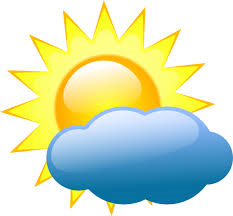 In science, we have learned how air can be captured, compressed, and used to make things work (via the hydraulics investigation pictured below). But how does air move and change around us every day? (wind, evaporation, condensation, precipitation) If we’re not providing the impetus for change as in our prior investigations, where is the energy coming from? (the sun, the energy from which drives all things natural) This week we will conduct an investigation called “water cycle in a jar” in which students will ask questions and make predictions about water and air; collect data and analyze it; and draw conclusions, which then lead to new questions.
In science, we have learned how air can be captured, compressed, and used to make things work (via the hydraulics investigation pictured below). But how does air move and change around us every day? (wind, evaporation, condensation, precipitation) If we’re not providing the impetus for change as in our prior investigations, where is the energy coming from? (the sun, the energy from which drives all things natural) This week we will conduct an investigation called “water cycle in a jar” in which students will ask questions and make predictions about water and air; collect data and analyze it; and draw conclusions, which then lead to new questions.


